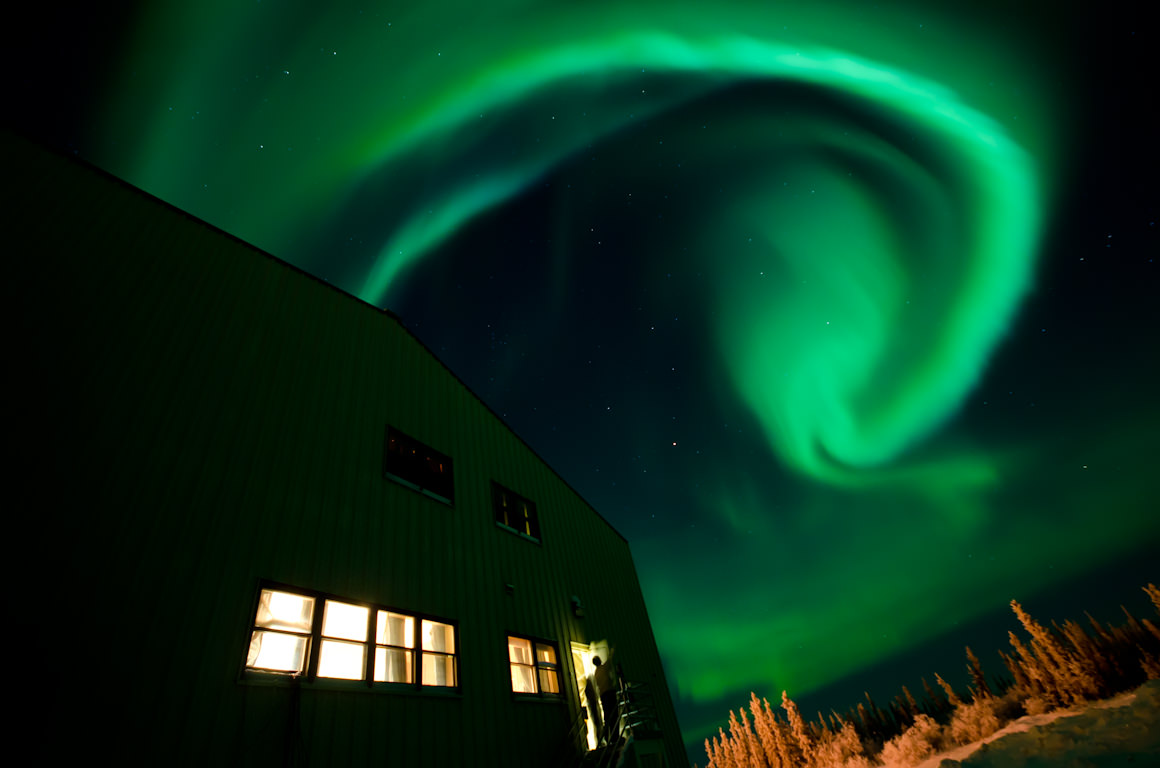Caption: Swirling Aurora. Image Credit: Jason Ahrns
There have been legends and folktales about sounds associated with auroae, but most accounts were summarily dismissed as imagination or illusion. But researchers in Finland set up microphones in conjunction with an aurora observation site and over the past 12 years captured a "clapping" sound that occurs at certain times when the Northern Lights are ablaze in the sky.
"In the past, researchers thought that the aurora borealis was too far away for people to hear the sounds it made," said Unto K. Laine from Aalto University in Finland. "However, our research proves that the source of the sounds that are associated with the aurora borealis we see is likely caused by the same energetic particles from the Sun that create the northern lights far away in the sky. These particles or the geomagnetic disturbance produced by them seem to create sound much closer to the ground."
The researchers installed three separate microphones and were able to record the sounds, which sound similar to crackles or muffled bangs which last for only a short period of time.
They then compared the recordings and determined the location of the sound source was about 70 meters (230 feet) above ground.
They made the recordings along with simultaneous measurements of the geomagnetic disturbances by the Finnish Meteorological Institute. The sounds did not always occur, but when they did, the measurements showed the aurorae were showed of a typical pattern, according the geomagnetic measurements.
The team said that it is not yet scientifically proven that the "clap" sound is related to the aurora borealis, but similar events have been detected only during times of high geomagnetic activity.
"Our research proved that, during the occurrence of the northern lights, people can hear natural auroral sounds related to what they see," said Laine. The sounds are quite soft, so one has to listen very carefully to hear them and to distinguish them from the ambient noise, the team said.
Details about how the auroral sounds are created are still a mystery, Laine said. The descriptions of the sounds vary from claps, to distant noise or sputter, and the So, because of these different descriptions, researchers suspect that there are may be several mechanisms behind the formation of these auroral sounds.
Find more information on these mysterious sounds on the team's website,
Auroral Acoustics
Source:
Eurekalert
 Universe Today
Universe Today
